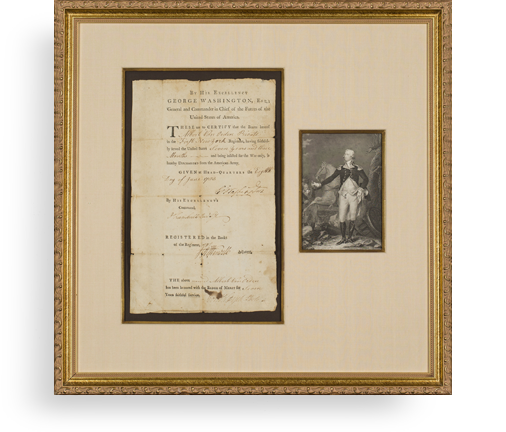During the First Italian Campaign, Napoleon, New Commander of the Army of Italy, Arranges for Safe and Secret Passage for the French Ambassador to the Ottoman Empire


A rare full letter from this period, with the address panel still present: "In all likelihood he would like to remain incognito, or should, if he wants to arrive in Constantinople without being seized by his enemies"
The French government had long enjoyed positive diplomatic relations with the Ottoman Empire, based in modern day Turkey in the city of Constantinople (Instanbul). This included the French providing aid and military training to the Ottoman Turks.
In the summer of 1796, the Directorate, which ran France at the time, appointed a...
The French government had long enjoyed positive diplomatic relations with the Ottoman Empire, based in modern day Turkey in the city of Constantinople (Instanbul). This included the French providing aid and military training to the Ottoman Turks.
In the summer of 1796, the Directorate, which ran France at the time, appointed a new Ambassador to the Porte, as the Ottoman Government was then known. This appointment to the nation that was Europe’s gateway to the East, was an important one. More than that, Napoleon knew that his ambitions of broader conquest ran through Constantinople. Just 2 years later, he invaded Ottoman-controlled Egypt, ending the harmonious relations between the French and the Turks.
Napoleon Bonaparte was then was in the nascent days of his meteoric career. He had earned a reputation and the respect of French leaders in battle outside Toulon. In late 1795, Napoleon, who had defeated a royalist insurrection, was promoted to Commander of the Interior and given command of the Army of Italy. His first major combat is now known as the First Italian Campaign, which began shortly after his marriage to Josephine in March of 1796.
In July 1796, Bonaparte, then in Northern Italy stalking the Austrians, learned that the newly-appointed Ambassador General Aubert Dubayet would be traveling through his location on the way to take his position at the Porte. Moreover, he was being sent to the Ottoman court with artillery equipment, and French artillerymen and engineers to help with the development of the Ottoman arsenals and foundries. Infantry and cavalry officers were also to train the Spahis and Janissaries in the Ottoman service.
This was an important mission and one of even greater importance to Napoleon’s plans.Letter signed, at the General Headquarters of Castiglione, July 22, 1796, to General Sahuguet, Commander of Lombardy in Milan.
“Bonaparte Commanding General of The Italian Army;
“I’ve learned that the Citizen Aubert Dubayet, ambassador to Constantinople, will be arriving in Milan. Prepare the same lodgings for him as you would a French general at the Municipality, without specifying for whom they are for, because in all likelihood he would like to remain incognito, or should, if he wants to arrive in Constantinople without being seized by his enemies.
“Have the cloud of useless officers leave Milan under the pretext that everyone is rejoining their outfit; do not deliver anything to the Batallions which have deputees in Milan. Be extremely severe if anyone prefers Milan to their army post while we’re fighting, they do not deserve to be spared.”
Days later, Napoleon and the mighty Austrians would engage. The Battle of Castiglione saw the French Army of Italy under Bonaparte attack an army of the Habsburg Monarchy led by Fieldmarschall Dagobert Sigmund von Wurmser on August 5. The Austrians were defeated and driven back along a line of hills to the river crossing at Borghetto, where they retired beyond the Mincio River. It was a great victory that enhanced Napoleon’s fame and reputation.

Frame, Display, Preserve
Each frame is custom constructed, using only proper museum archival materials. This includes:The finest frames, tailored to match the document you have chosen. These can period style, antiqued, gilded, wood, etc. Fabric mats, including silk and satin, as well as museum mat board with hand painted bevels. Attachment of the document to the matting to ensure its protection. This "hinging" is done according to archival standards. Protective "glass," or Tru Vue Optium Acrylic glazing, which is shatter resistant, 99% UV protective, and anti-reflective. You benefit from our decades of experience in designing and creating beautiful, compelling, and protective framed historical documents.
Learn more about our Framing Services










































































































